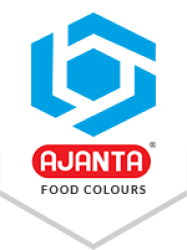Synthetic Food Colour - Amaranth Dye
Amaranth also known as FD&C Red No. 2 is a minoazo dye, providing a deep reddish-pink to purple colour to the products. This is an important hue in the synthetic food colours manufacturing industry, available in powder, liquid, and granule forms which makes it versatile and easy to use in different manufacturing industries such as food, cosmetics, pharmaceuticals, and more. The synthetic amaranth dye is favored for its consistency and stability, ensuring that the colour remains vivid and attractive throughout the shelf life of the product.
History of the Synthetic Amaranth Food Dye
The synthetic amaranth food dye, chemically known as trisodium salt of 1-(4-sulfonato-1-naphthylazo)-2-naphthol-6,8-disulfonic acid, was first discovered in the early 20th century. This dye was developed from coal tar, as we know most synthetic food colours were prepared from coal tar. It has been popular among food manufacturers in a very short time because of its potential to provide vibrant and appealing colours to the products. The commercial use of amaranth dye began in the 1930s, quickly becoming a popular choice for manufacturers aiming to enhance the visual appeal of their products. Over the decades, it has been extensively used in confectioneries, beverages, and bakery products.
Applications of Synthetic Amaranth Food Dye
Amaranth dye is extensively used in various manufacturing industries today. In the food and beverages industry, it is used in products like soft drinks, fruit punches, cakes, pastries, frostings, flavored yogurts, ice creams, milkshakes, chips, crackers, and more. In the pharmaceutical industry, this dye is used in the manufacturing of capsules, tablets, and syrups to provide an appealing look that helps in medicine differentiation and decreases the chance of errors in taking the medication. Additionally, Amaranth dye is used in the animal feed industry to differentiate animal feeds for poultry, swine, cattle, and more. These vibrant and appealing coloured products attract consumer attention, which helps in brand recognition and increases the product’s sales.
Throwback to Using Low-Quality Amaranth Food Dye
Using low-quality synthetic food colours in products including Amaranth leads to several issues, particularly at the commercial level. These inferior-quality dyes may not provide the desired colour consistency, leading to uneven colouring and reducing product appeal. Moreover, low-quality dyes might contain impurities that could pose health risks to consumers. These problems can result in loss of consumer trust, product recalls, and potential legal challenges, ultimately affecting the brand's reputation and financial standing.
Regulatory Compliance on Amaranth Food Dye Colour
All synthetic food colours including amaranth dye are regulated by various governmental bodies around the world such as the U.S. Food and Drug Administration (FDA) in the United States, the European Food Safety Authority (EFSA) in Europe, the Food Safety Authority of India (FSSAI) in India, etc. These organizations have established stringent guidelines for the use of amaranth dye, ensuring that they are safe for human consumption and used within specified limits. Ajanta Food Colours is a leading synthetic food colour manufacturing company in India that manufactures high-quality colours that are approved for use in products from various governmental bodies around the world.
Ajanta Food Colours uses the latest technology and equipment in their synthetic colours manufacturing industry to provide top-notch colours to the manufacturers and ensure their quality. These machinery includes ICP OES to detect heavy metals in raw materials and finished goods, high-performance liquid chromatography for organic impurities, UV spectrometry to analyze pigment content and strength, absorbance curves of colours, thin-layer chromatography, vacuum ovens for LOD tests, humidity detection in products, and colour matching machines, along with other instruments for comprehensive testing of raw materials and colours.
Ajanta Colours also received various awards and certificates from the Indian authorities as well as from the countries where Ajanta exports its high-quality colours, this achievement shows the expertise of Ajanta in the synthetic food colour manufacturing industry. Some of the awards and certificates received by Ajanta Food Colours include The Arch of Europe Award, the Bureau of Indian Standards (BIS) Award, certifications from The Food Safety and Standards Authority of India (FSSAI), the US Food and Drug Administration (US FDA), as well as Halal, Alcumus ISOQAR, Star-K Kosher, Food Safety System 22000 (FSSC 22000), and ISOQAR certifications, among others.
Conclusion
Amaranth dye has an interesting history and diverse product uses. Over time, it has become more popular among manufacturers for its ability to provide a vibrant and appealing look to products. Ajanta Food Colours, an Indian company, has been manufacturing Amaranth dye for a long time. Its colourants include Amaranth dye, and its Supra range of colours is highly demanded in various manufacturing industries such as food and beverages, cosmetics, pharmaceuticals, animal feed, personal and home care products, and more. By using Ajanta’s high-quality colours in their products, manufacturers benefit from the ability to export their products to the international market, as these colours are approved by various governmental bodies around the world. These colours come in many different vibrant shades, allowing manufacturers to use unique and distinct colours in their products, aiding in brand recognition and helping them stand out in the competitive market, ultimately boosting product sales.
If you are a manufacturer and looking for colours that help you to stand out from the competition and create the brand identity for your product, Ajanta Food Colours can be the best colouring partner for you. If you want to know more about Ajanta Food Colours or its offerings, please visit the Ajanta Food Colours website or contact us today!




